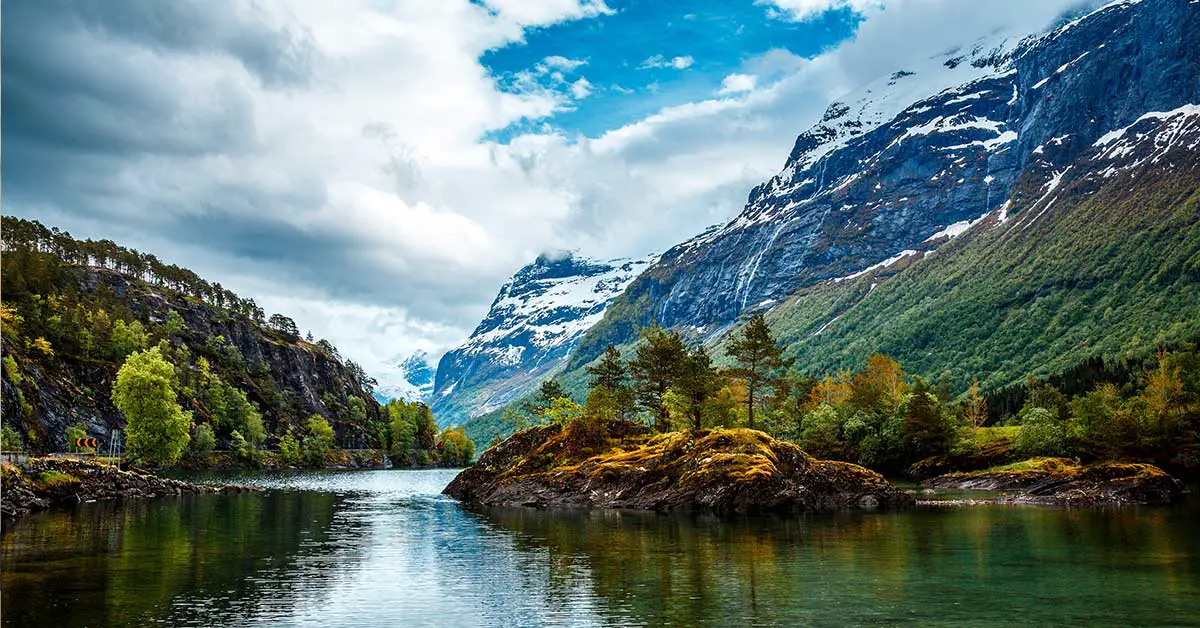If you turn on a light bulb in your home for a few minutes, it will use a few watts of energy provided from a local utility company’s power plant. If you have an off-grid renewable energy system, like solar panels on your roof or an on-site wind turbine, you won’t draw any energy from the grid, but instead from your own electric system. If you have a solar panels that are connected to the grid and produce more energy than you use, thus feeding electricity back into the grid, that’s called being energy positive. And that’s what the Svart Hotel is striving for – being the first energy positive hotel in the world.
The Svart Hotel, which will be located in Arctic Norway near the Svartisen glacier, was designed by Snøhetta, a Norwegian architecture firm, and will draw its energy from the sun using a solar panel array placed on its roof. The hotel intends to produce more energy than it uses with its rooftop solar plant.
Additionally, the hotel will be constructed from locally sourced materials to the greatest extent possible and will subject itself to a rigid set of sustainability criteria.
According to their website: “Svart is the first building to be designed and built according to the highest energy efficiency standards in the northern hemisphere. The hotel will save 85% of its annual energy consumption and it will harvest enough solar energy to cover both the hotel operations, including its boat shuttle operation, and the energy needed to construct the building.”
“The ambition is to go further with our goal to develop scalable technology that will apply to other buildings as well, to support a further reduction in energy consumption.”
Read more: This City’s Parks are Going Organic with Ban on Synthetic Weed Killers
Svart Hotel – a sustainable model
The hotel, whose design inspiration was drawn from traditional wooden Norwegian structures, won’t just draw energy from a renewable source, but its design is geared specifically toward the environment – namely not having a large, negative environmental impact. Instead, it wants to blend in and fit seamlessly with the arctic environment in which it’s built.
“The architecture is inspired by local coastal building traditions and stands on wooden piles dissolving the boundary between land and fjord,” they write on their website. “The shape of the hotel provides a panoramic view of the fjord and an experience of living in proximity to nature.“
Still under construction and due to open to the public in 2022, the Svart Hotel will have a total of 100 available rooms, four restaurants, a 3,300 square foot spa, and will feed its guests using food sourced locally, some from the hotel’s own on-site sustainable farm.
For interested guests, the hotel will host an onsite education and design lab to help guests learn more about the sustainability of the hotel and why it’s important to design buildings with sustainability in mind.
Read more: Meet the World’s First Island Powered by an Off-Grid Renewable Energy System
Benefits of sustainable design
Every creature on Earth uses resources from the Earth, whether that’s food, mud, wood, stone, or any other raw material found present on this planet. Most animals use resources in a sustainable way, so not to cause environmental degradation and subsequently threaten itself with extinction. If an animal population grows too large and begins using resources unsustainably, it can run out and experience a population decline or eventual extinction due to scarcity. Nature has a way of correcting unsustainable use of resources. The same principles apply to humanity too.
Every year, environmental activists acknowledge what they call Earth Overshoot Day, which marks the day that humanity exhausts nature’s budget for the year. In 2020, humanity used more resources than the Earth can sustainably produce in a single year by the 22nd of August. It shows that most, if not all, human societies do not function sustainably.
Earth Overshoot Day calculates that in order to support humanity’s demand on Earth’s ecosystem, we would need 1.6 Earths. Taking steps to reduce your impact on the planet, whether it’s choosing to use reusable containers at home or designing an energy positive hotel, help move Earth Overshoot Day to later in the year and, ideally, stop needing to acknowledge the day at all.
Read next: IKEA is now selling tiny homes

